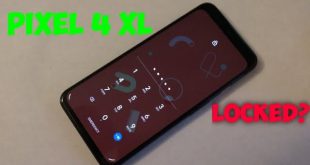![]()
Experiencing glitches or performance issues with your Google Pixel 7a? Sometimes, the most effective solution is to give your device a fresh start by resetting it. This comprehensive guide will provide you with step-by-step instructions on how to rejuvenate your Pixel 7a, restoring its optimal functionality and performance.
Resetting your device erases all stored data, so creating a backup before proceeding is crucial. Once your data is safely backed up, you can proceed with the reset process with confidence. By following the clear and concise instructions outlined in this guide, you can breathe new life into your Pixel 7a, resolving any issues and restoring it to its peak condition.
## Restarting for Performance Enhancements
Restarting your smartphone can significantly improve its performance. It clears out memory and cached data, which can accumulate over time and slow down the device. A restart can free up resources, allowing apps to run more smoothly and efficiently. The table below summarizes the benefits of restarting for performance enhancements:
| Benefit | Description |
|—|—|
| Memory optimization | Frees up memory by closing unused apps and clearing cached data |
| Removal of glitches | Resolves temporary software issues and system bugs |
| Improved responsiveness | Makes apps and system functions run faster and more smoothly |
| Extended battery life | Reduced background processes conserve battery power |
Soft Reset vs. Hard Reset: When to Use Each
Table of Contents
Understanding the differences between a soft reset and a hard reset is crucial for maintaining the optimal performance of your device. While both methods involve restarting your device, they vary significantly in their purpose and impact.
A **soft reset** is a quick and non-destructive way to refresh your phone’s operating system. It gently reboots the device, closing all running apps and clearing temporary memory. This method is typically used to resolve minor system issues, such as freezing or lagging, without affecting any stored data or personal settings.
Conversely, a **hard reset** (also known as a factory reset) is a more drastic measure that completely wipes your device’s storage and restores it to its original factory settings. Unlike a soft reset, this process erases all user data, apps, and settings, leaving your phone in a “clean slate” state. A hard reset is usually recommended when troubleshooting major software issues or preparing your device for sale or transfer.
In summary, a soft reset should be your first line of defense for minor system issues, while a hard reset should be reserved for more severe problems or when you need to completely reset your device.
Troubleshooting Frozen or Unresponsive Devices
If your device becomes unresponsive or frozen and no longer responds to usual input, there are a few troubleshooting steps you can take to rectify the issue. These steps, outlined in this section, provide a systematic approach to resolving the problem efficiently.
Bootloop Recovery Techniques
If your device is stuck in a bootloop, a repetitive cycle of rebooting, there are a few techniques you can try to recover it. These methods may vary depending on the specific situation and the device model.
Restart Options and How to Choose
![]()
Restarting your Pixel 7a may be necessary for various reasons, such as resolving glitches, updating software, or personalizing settings. Understanding the available restart options and their potential effects will empower you to make informed decisions.
Safety Precautions and Considerations
Before proceeding with a restart, it is imperative to exercise caution and adhere to essential safety measures. These precautions aim to minimize potential risks and ensure a seamless restart process.
Battery Life:
Verify that your device has sufficient battery life to complete the restart procedure without interruptions. A low battery level may hinder the device’s ability to restart successfully, leading to unexpected outcomes.
Data Backup:
Prior to restarting, ensure that crucial data, including contacts, messages, and media files, have been backed up to prevent potential loss. Unforeseen circumstances during the restart process may result in data erasure.
Peripherals and Accessories:
Disconnect all external peripherals, such as headphones and charging cables, from your device before restarting. Leaving them connected may interfere with the restart process or pose safety hazards.
Software Updates:
Confirm that your device does not have any pending software updates. Installing updates before restarting is advisable to prevent potential conflicts or complications during the restart procedure.
Physical Impacts:
Avoid applying excessive force or subjecting your device to physical impacts during the restart process. Such actions may damage internal components and compromise the functionality of the device.
Q&A
I accidentally froze my Google Pixel 7a and now the screen won’t respond. How do I restart it?
If your Google Pixel 7a has become unresponsive and the screen is frozen, you can perform a forced restart by pressing and holding both the Volume Down button and the Power button simultaneously for at least 10 seconds. This will force your device to shut down and restart, potentially resolving the issue.
How to restart Google Pixel 7a using the physical buttons?
To restart your Google Pixel 7a using the physical buttons, press and hold both the Power button and Volume Down button simultaneously. Keep holding both buttons until the screen turns off and the Google logo appears. Release the buttons once the logo appears, and your phone will restart.
 New mods for android everyday
New mods for android everyday



